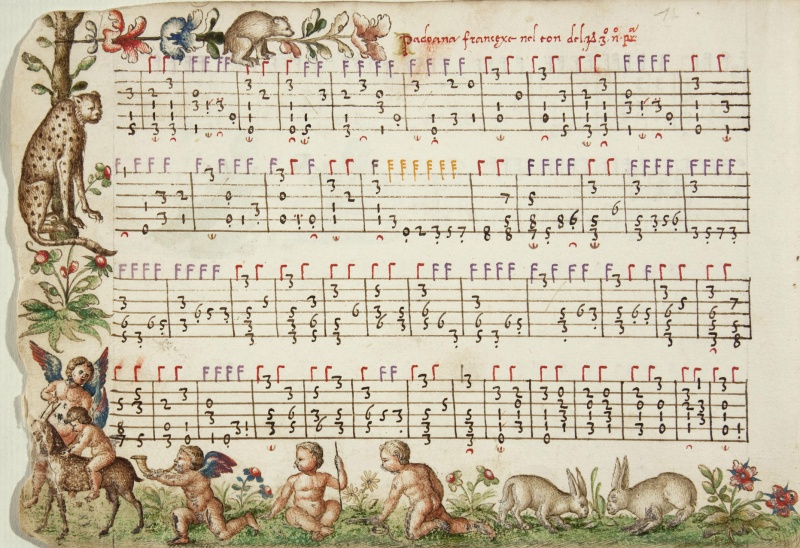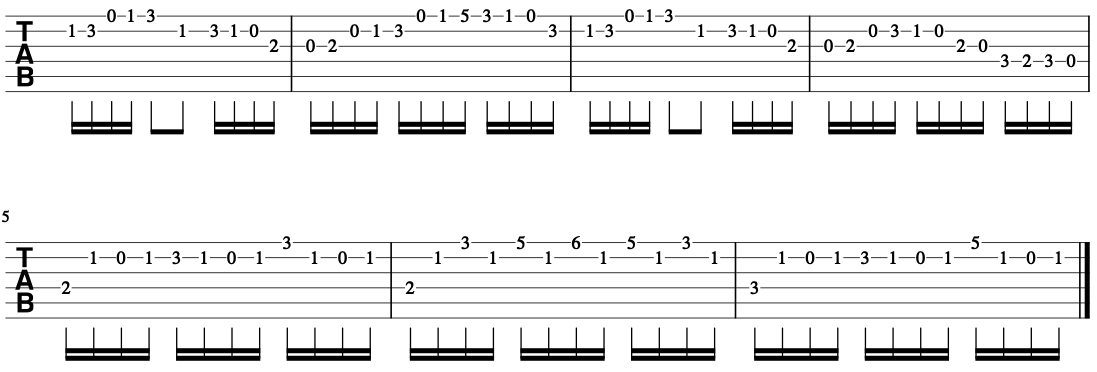
It is a common misconception that tablature, or tab, is only a product of the late 20th century or even the early 21th, probably due to the popularity of the guitar (and other pluck instruments such as the ukulele, mandolin, bass) as an instrument that anyone and everyone can play. And because the popularity of the guitar rised, mostly steel-stringed acoustic and electric, the use of tablature in turns become popular as well (imagine this as a reciprocal relationship). Tablature requires little or sometimes even zero musical knowledge. One only needs to learn how numbers on the tablature can be transfered to the frets and strings combinations on the guitar, and they can pretty much easily play a melody, a chord or a complete song/piece. Therefore tablature provides a quick, cost-effective, easy, while also standardized way to 'master' the instrument.
As I stated, many people thought that tablature only existed for a handful of years. In fact, it had been used as long as the invention of the instrument it self. Although it is true that there were no classical, or absolutely no electric guitars from the 15th century, the modern guitar was actually descended from the Lute (that's where the word luthier - guitar maker - came from). Similar to the guitar [or to be more accurate it should be that the guitar is similar to], the lute is also a plucking instrument, and some genius had thought of a way to notate the fingering onto a sheet of paper. As a result, what we can see on the tablature is a combination of strings and fret: the lines represent the strings (it is worth mentioning that the old tablature has the highest string at the bottom, not on top), and the numbers/letters represent the frets on the instrument. The method of writing music with tablature had been very much adopted by renowned composers, such as John Dowland or Silvius Leopold Weiss.

Let us move on to the reasons why tablature is okay to use, but nonetheless has several weaknesses. While it is true that tablature assumes little theoratical knowledge (note, key, scale, etc) by focusing primarily on the practical aspect of playing (where to put finger), I believe it can severely impede one's musical development at later stages, where much more complexities are present. At a more fundamental level, tablature hinders the ability to 'see' music as a collection and progression of organized sound, which is crucial to play music better; instead the notes we see on the tablature would be so fragmented and unrelated. Even for non-amateur players would only be able to connect thoses notes with muscle memory, and once the muscle memory is lost, so is the music. We can all do an experiment together: here are notation and the tablature version of an excerpt from the Violin Sonata No. 3 by Bach:

Ah yes. Although it may be intimidating at first, but at least we now know that the higher the notes, the higher the pitch, and we can see the overall contour of the music. Maybe tablature would be easier to look at?

Now try singing the melody using tablature. That would be very hard, and given that this is only a simple case, the use of tablature is basically impractical for this purpose.
One more reason: Tablature unevitably makes the player fixates on the transcriber's fingering. Although might not be an excelent example, but I shall reuse the same piece. If one knows how the guitar works, the above fingering provided by the tablature is almost unplayable, or to play with phrasing effortlessly (notice that some notes should be sustained rather than cut, and there is a stretch between fret 1 and 6). If I were using the notation, I can freely adjust the fingering to make it more suitable and beautiful for the guitar.
Here is my verdict: Tablature is not wrong, and I even encourage the use of it, partly because I low-key want to popularize the calssical guitar, but only for beginners. I myself have played an untrackable number of pieces using tab. Unfortunately, it somewhat limited my full musical potential due to the fact that I could only play musics that were available in tablature, thus missed out on so many other great compositions. Once I learned how to read standard notation, and I admit that it was a steep learning curve, I was able to unlock the so-called secret technique of guitar playing.
P.S.: I deliberately chose a piece by Bach to celebrate one of his birthdays, on 31st of March (Bach has "two" dates of birth since there were two different calendars in use back then). Happy birthday and thank you for your music!
P.S.S: There is a very nice analogy I would like to add. Reading music, specifically notes, is like reading words. We don't read each letter, one by one, but we remember the combination of letters, thus a word. By looking for patterns (overall contour) in the notation, the musician can quickly 'guess' and play the music without having to read individual notes - this process obviously takes not least months; whereas in tablature, the formation of notes (in fact they merely represent pitch, if they even do at all) is fragmented, discrete, unconnected and unrelated. The memorization of the music will therefore be significantly harder.